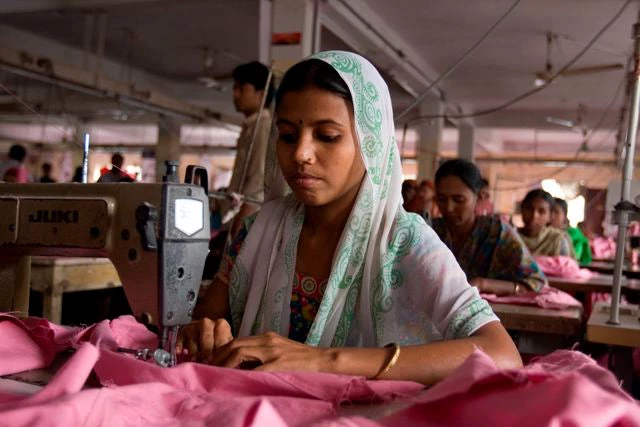
Photo by: Arne Hoel/World Bank
China now dominates the global apparel market – accounting for 41% of the market, compared with 12% for South Asia. But as wages in China continue to rise, its apparel production is expected to shift toward other developing countries, especially in Asia. How much of China’s apparel production can South Asia capture and therefore how much employment could be created? This is important because apparel is a labor intensive industry that historically employs relatively large numbers of female workers.
In our new report, Stiches to Riches?, we estimate that South Asia could create at least 1.5 million jobs, of which half a million would be for women. Moreover, that is a conservative estimate, given that we are assuming no changes in policies to foster growth in apparel and address existing impediments.
So how did we arrive at this calculation on job creation? Let’s begin with a look at how apparel production decisions are made. The United States, the European Union (EU), and other developed countries buy the largest shares of globally traded apparel, and it is their retail firms that typically decide what kind of apparel consumers would want. The process begins with these firms presenting designs and orders (directly or indirectly) to producers in developing countries. Producers respond with production characteristics – including costs and non-cost factors (like production times, quality assurances, and, increasingly, worker conditions). On that basis, developed country buyers then decide on where to source the apparel.
As prices rise in China, these buyers are looking for other places from which to source apparel. The responsiveness of these buyers to prices in different countries is analyzed by economists with the concept of elasticity, which is defined as the percentage change in quantity demanded for a given percentage change in price.
When comparing two or more countries, economists often refer to the cross-price elasticity, which is the percentage change of imports from, say, India, for a given percentage change in the prices of another country, such as China. If a buyer is choosing between two countries (that is, if two countries were competing against one another and are therefore considered relatively close substitutes for each other in the world market), then an increase in the price in, say, China, will increase the amount imported from the competing country.
In our report, we use detailed U.S. and EU apparel import data to estimate how much production may shift between China and 7 leading developing Asian apparel producers: 4 in South Asia (Bangladesh, India, Sri Lanka, and Pakistan) and 3 in Southeast Asia (Cambodia, Indonesia, and Vietnam). The results suggest that under current policies, South Asian countries’ exports to these markets would increase by 13-25% (depending on the country) (see table). However, the Southeast Asian benchmark countries would do even better, with a 37-51% increase (depending on the country).

What will these changes mean for employment? That depends on how much employment will increase if exports go up. Using detailed data on firms and workers, we also estimate the change in employment that would occur if exports were to increase. We find that a 1% increase in apparel output (which is used as a proxy for exports) is associated with a 0.3–0.4% increase in employment (for both men and women) in Bangladesh, Pakistan, and Sri Lanka (with India’s values a bit lower).
The final step is to combine the export and employment elasticities to generate estimates of how much employment might increase under current policies as Chinese apparel prices rise by, for example, 10%. We find that:
- In India, employment might increase by nearly 1.2 million people, based on current apparel employment of about 35 million people. Since many, if not most, of these are jobs would be for women, a rise in Chinese prices alone could directly contribute to India’s development – as would be the case in the other South Asian countries.
- In Pakistan, employment might increase by nearly 220,000, based on current apparel employment of about 2.5 million people.
- In Bangladesh, employment might increase by about 131,000 people – about the same as the total apparel employment in the United States – based on current apparel employment of about 3.1 million people.
- In Sri Lanka, employment might increase by about 14,500 people, based on current apparel employment of about 180,000 people.
The bottom line is that these job totals – which together reach about 1.5 million people – could be even larger if South Asia takes steps to tackle inefficiencies that are undercutting its competitiveness. Key policy recommendations in Stiches to Riches? include: (i) easing barriers to the import of manmade fibers; (ii) facilitating market access, and (iii) encouraging foreign investment. These changes would also help other light manufacturers (like footwear and toys), thereby boosting South Asia’s development potential.
Read the full report: Stitches to Riches? : Apparel Employment, Trade, and Economic Development in South Asia


Join the Conversation